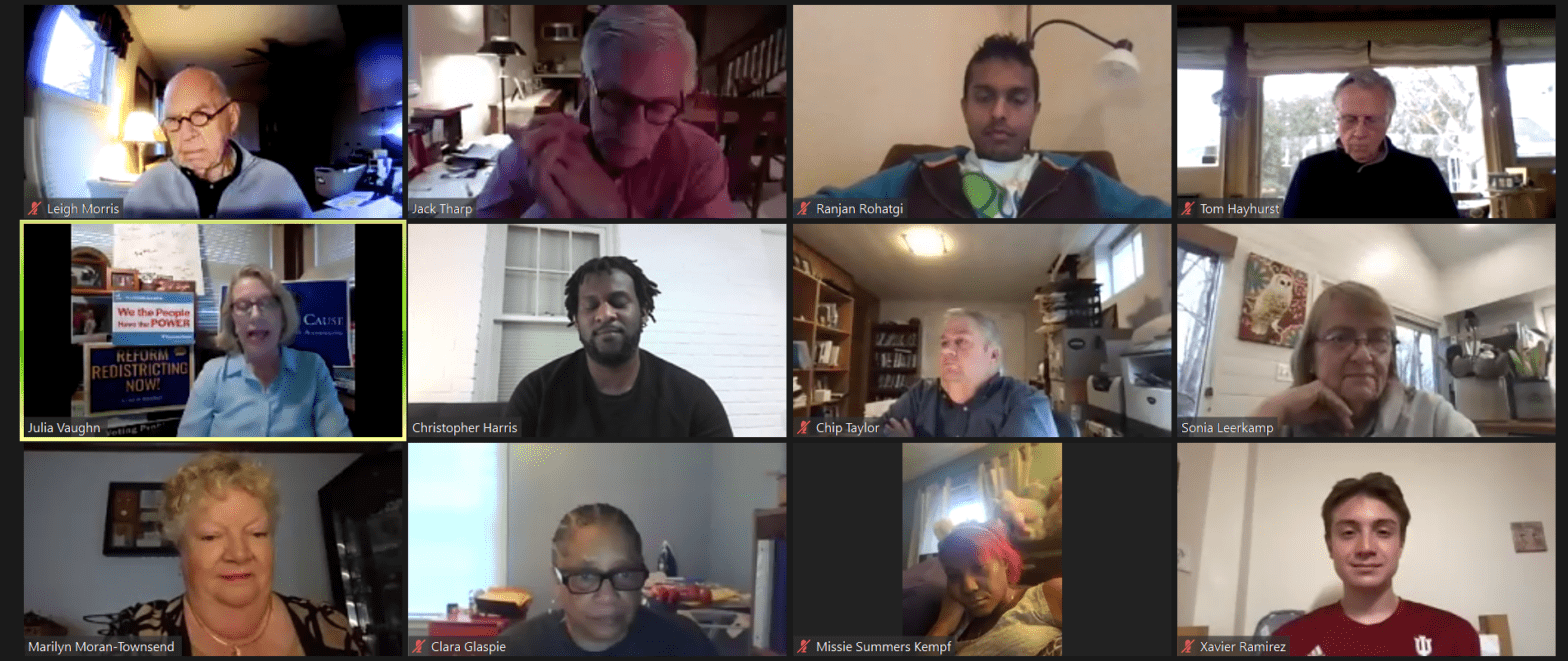
Follow our coverage of redistricting at The Indiana Citizen
At first glance, Indiana’s 2nd Congressional District as drawn during the last redistricting process in 2011 didn’t look a lot different from the 2nd Congressional District drawn during the previous one in 2001.
Both extended from the Michigan state line through South Bend and into several counties to its south. And while far from a perfect square, either appeared more compact than most of the eight other congressional districts on the map – and in no way resembled the long, meandering configuration that led more than two centuries ago to the coining of the term “gerrymander.’’
Appearances to the contrary, the 2nd Congressional District of the past decade has yielded election returns much different than its predecessor. In the decade after the 2001 redistricting, the district went Republican twice and Democratic three times, with percentage winning margins usually in the single digits. During the past decade, it’s gone Republican five times in a row, with incumbent Rep. Jackie Walorski, after losing in 2010, steadily building her winning margin in the elections since. It was about 23 percentage points in 2020.
The Indiana Citizens Redistricting Commission (above), a citizens group formed to offer advice and alternatives to the Indiana General Assembly as another redistricting process approaches, hosted a virtual public hearing Tuesday evening for constituents of the 2nd, the last in a series of nine such hearings held during the past several weeks, one in each of Indiana’s nine congressional districts.
“The 2nd changed a lot,’’ said Julia Vaughn, policy director for Common Cause Indiana and a leader of the All IN for Democracy coalition formed to promote an independent redistricting process, during introductory remarks to those who tuned into the hearing webcast. “There was a lot of speculation that it would pave the way for Jackie Walorski to win the district.’’
As in 2011, Republicans will control the redistricting process this year by virtue of their majorities in the Indiana House and Senate.
The 2nd is a clear example of the tradeoffs that come with drawing fair congressional and legislative districts, Vaughn said, adding that just as you can’t judge a book by its cover, you can’t judge a district by its shape – neither the 2nd nor many of the other congressional and legislative districts drawn in the last redistricting.
“Perhaps they were more compact,’’ she said. “They certainly have failed to produce competition.’’
Among those testifying at the hearing was Elizabeth Bennion, a professor of political science at Indiana University South Bend. Compactness, she agreed, “is not necessarily a measure of fairness. It may create a significant partisan advantage for one party.’’
Bennion also pointed to “communities of interest’’ – populations in the same locale, regional industry or with other characteristics in common – saying, “We should keep communities of interest together, and that means counties.’’
Vaughn noted that was another shortcoming of the 2nd as it’s currently drawn, adding, “LaPorte County is split between the 1st and the 2nd. Is there a good reason for that?’’
Often, the effect has been to split urban populations across congressional and legislative districts while consolidating those in rural areas.
“Your districts are among numerous examples where we have urban and rural districts combined and the urban voters are drowned out,’’ Vaughn told the group.
Steven Wilder of Elkhart said that’s reflected in his legislative representation by Republicans Douglas Miller of the Indiana House and Linda Rogers of the Senate.
“They’re both builders and developers,’’ Wilder said. “They’ve been sponsoring legislation that helps out the builders and developers. The district is drawn so that basically the upper middle class, white rural areas dominate. … Most of the time the urban areas are shut out.’’
Another man testifying, Kenneth Smith, reminded the commission of the challenge it faces as it wraps up its public hearings.
“I asked a senior Indiana House member a few years ago why Indiana never solved redistricting reform,’’ Smith said. “He said he thought it would never happen unless courts intervened. Related to that, a senior journalist argued that politicians know they do not have to listen to voices from the state if they do not see that those voices have reach and staying power.
“My question is, apart from urging people to contact their legislators, what can or will this independent commission process do to show legislators strong voices with reach and staying power?’’ – The Indiana Citizen